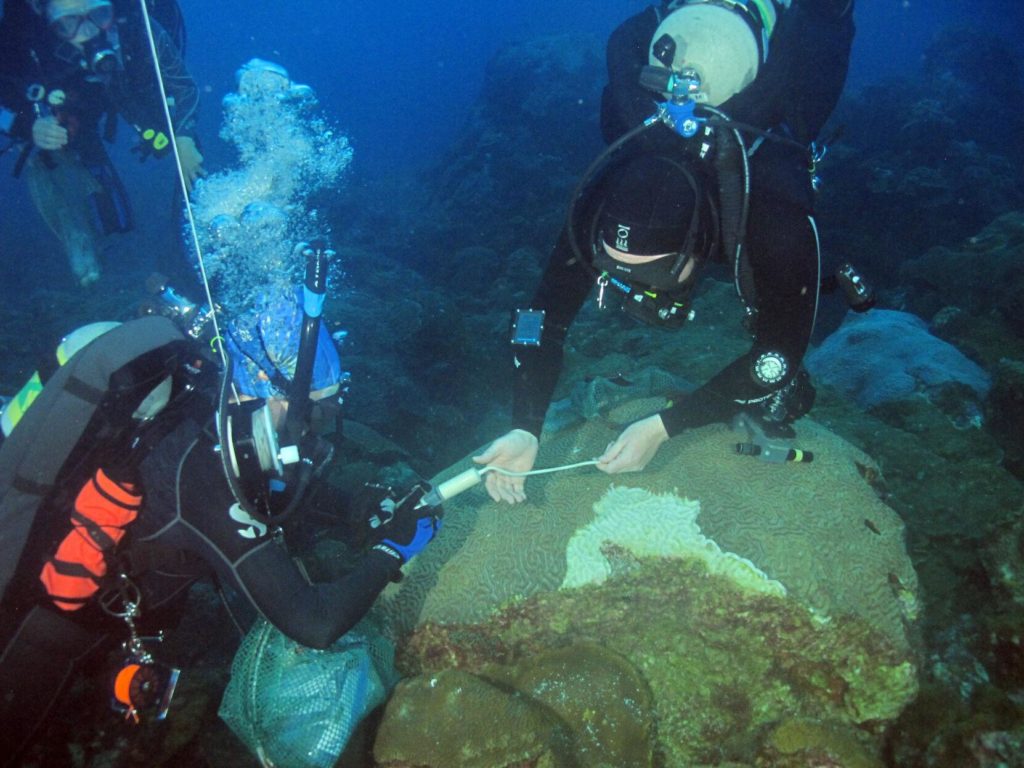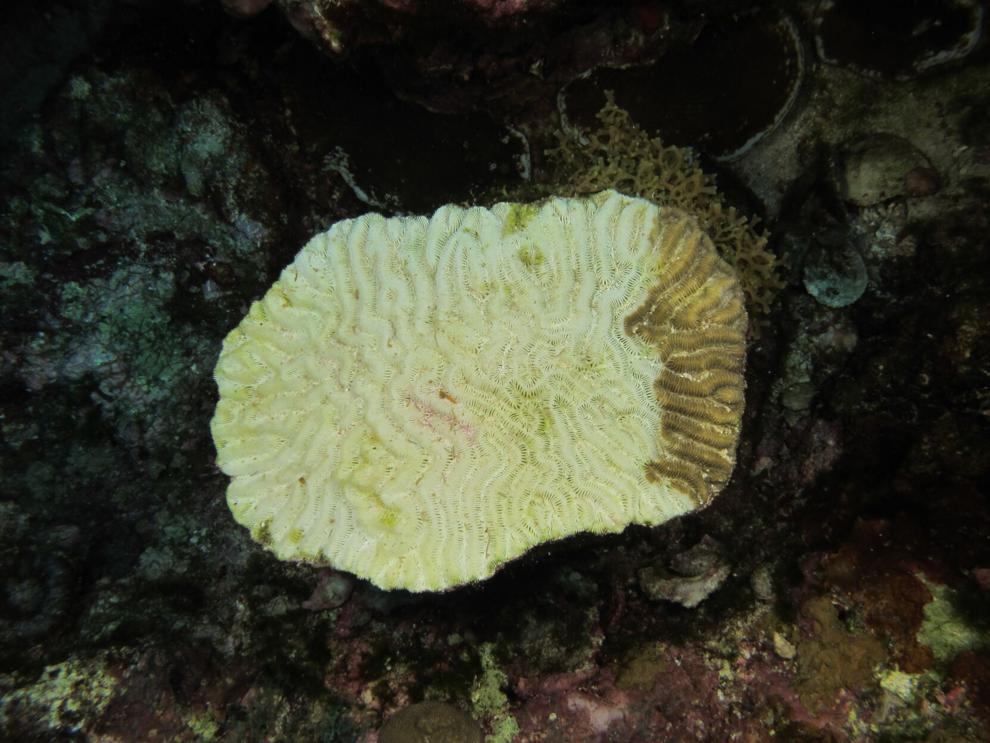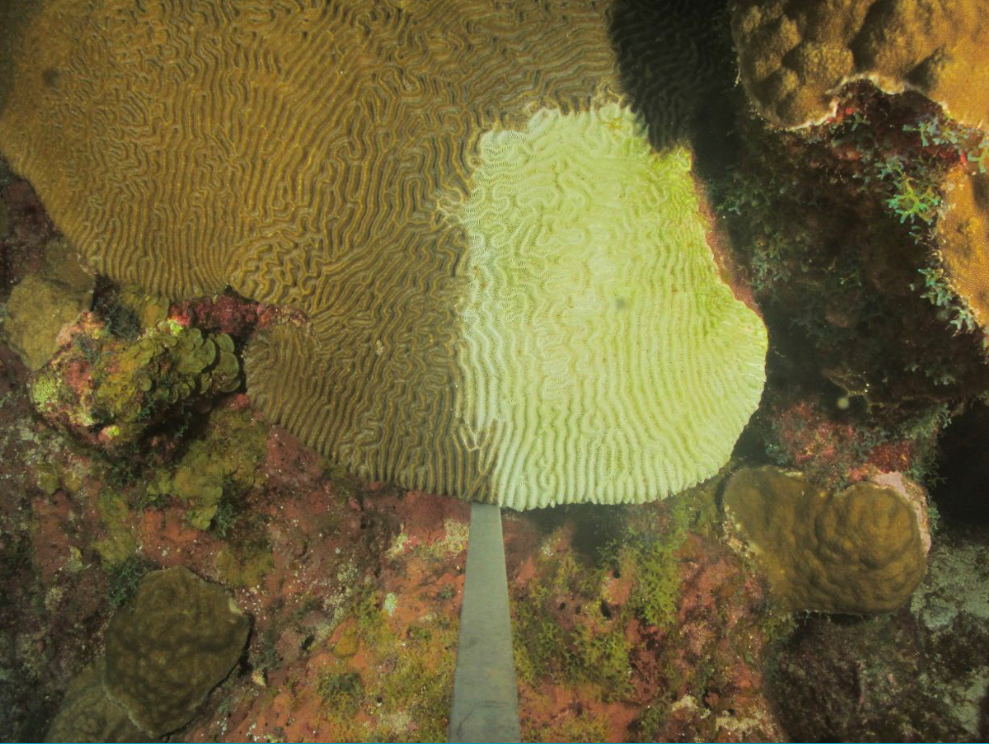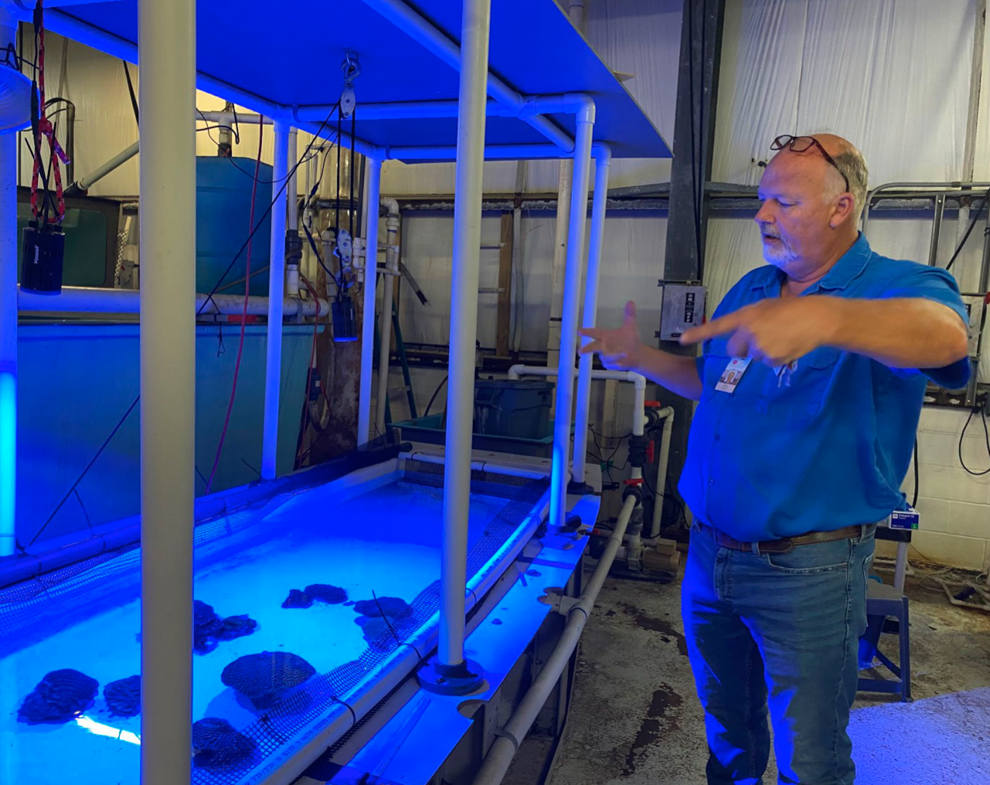
Kelly O’Connell, NOAA
A while back I posted a story on the killing off of the coral closest to us. The scientist knew what the culprit was but now they are not sure.
The mysterious disease killing corals in the Gulf of Mexico’s largest coral sanctuary continues to puzzle scientists. When it was first spotted in Flower Garden Banks National Marine Sanctuary a few weeks ago, scientists sounded the alarm, believing it was stony coral tissue loss disease, a newly-discovered affliction that’s been ravaging reefs in the Caribbean Sea but has somehow stayed out of the Gulf. But now Michelle Johnston, a sanctuary ecologist, isn’t so sure what it is. “We know something is happening,” she said. “Something very strange.” Whatever is killing the sanctuary’s coral, it’s moving more slowly than stony coral disease, but the symptoms are similar: white lesions that disintegrate coral tissue, killing the colorful creatures and turning their bodies bone white. “It’s not spreading as rapidly as we’d expect if it was stony coral disease, but that doesn’t matter,” said Johnston, who works for the National Oceanic and Atmospheric Administration, which manages the sanctuary. “Tissue loss is tissue loss, and that’s not good for the reefs.”
nola.com

NOAA
The sanctuary is about 100 miles off the coast tucked in between Texas and Louisiana.
The sanctuary, which sits about 100 miles south of the Louisiana-Texas line, includes the northernmost coral reefs in the continental United States and is one of the few places in the Gulf that’s off limits to commercial fishing and oil and gas exploration. Scientists first saw what appeared to be stony coral disease in the sanctuary during a research cruise that ended in early September. The disease, discovered just eight years ago, has devastated North America’s only barrier reef, which stretches for 350 miles in Florida, and popped up in at least 20 countries across the Caribbean. A study by Mexican scientists found that the disease was causing “unprecedented” mortality rates of up to 94% among almost two dozen coral species. Last month, NOAA announced plans to pour $125 million into the fight against the disease. At least $625,000 was designated for the treatment and rescue of corals in Flower Garden.

NOAA
the sanctuary staff has been working to apply what they hope will fix the problem.
The sanctuary’s staff have been carrying out a wide-ranging emergency response plan, which includes divers administering treatment to infected corals, monitoring, coral sampling and the rescue of healthy corals. “Everything in our plan we frickin’ did,” Johnston said. “It’s a remote place and we have a limited number of divers, but we did everything in the plan. I think we have one of the best responses to this disease. We didn’t waste any time.” Even if the disease in the sanctuary isn’t stony coral disease, the response would likely be the same, sanctuary officials said. The primary response strategy is mixing up an antibiotic paste and spreading it directly on coral lesions. “It’s like using Play-Doh underwater,” Johnston said. “We press it and mold it into the (coral’s) grooves.” Divers are also using needle-less syringes to suck up coral mucus, which contains cells and DNA for later testing.

Kristen Ewen, National Park Service
There have been other disease outbreaks but they have not followed a straight line.
Other coral disease outbreaks in the Caribbean and Atlantic Ocean have taken odd turns once they’ve reached Flower Garden, according to past research NOAA scientists are now reviewing. It could be that stony coral disease is in the sanctuary but it’s not acting as it does elsewhere. “If it’s a disease at Flower Garden, it’s going to be weird and not like in the Caribbean,” Johnston said. NOAA is shipping colonies of Flower Garden corals to an aquarium in Galveston, Texas. The rescued corals could be used to repopulate areas hit hard by the disease. Some diseased corals surprised scientists by quickly recovering once in the aquarium’s tanks. Johnston said nobody’s sure why the corals began to heal at the aquarium. Also unclear are how the disease arrived in Flower Garden and how it spreads. Some NOAA officials believe stony coral disease spreads primarily through ballast water in cargo ships, but few large vessels stop in Flower Garden, said G.P. Schmahl, the sanctuary’s manager. “Most ships are just passing through,” he said.

NOAA
Research continues looking for a solution.
Johnston hopes the samples they collect will reveal the disease’s identity, but the process could take up to four months. “Hopefully, after the holidays, we’ll know something,” she said.
Aquarium water does not have oil and ballast water so the problem might lie there.



